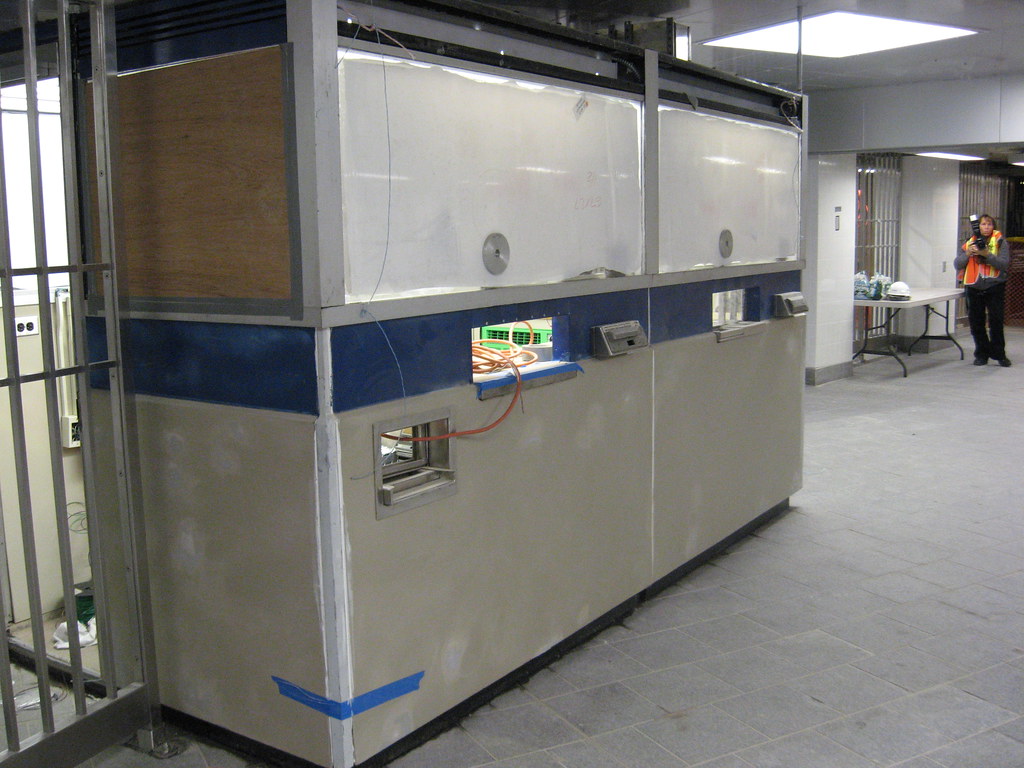
Is this art or vandalism? Twenty five years later, the debate still rages. (Photo by Martha Cooper)
It’s hard for New Yorkers in 2009 to conceptualize what the subways were like 25 years ago. I was reminded of this fact earlier this week when my Criminal Law case tackled the ever-popular decision in People v. Goetz. That seminal case, as students of New York history know, involved the vigilantism of Bernard Goetz on a subway car in 1984.
Without touching upon the moral issues raised by the case, the class discussion showed a clear divide between people who had grown up in New York and people who hadn’t. Those who hadn’t were having a tougher time understanding what the subways were like in the 1980s.
These days, we have no qualms about riding the trains at 2 a.m. heading home from a night out. Twenty five years ago, though, the graffiti-covered trains, prone to electrical problems, track fires and all sorts of breakdowns, were just not that safe. But back then, the system wasn’t that safe, and everyone knew it.
During the same year as the Goetz shooting, Martha Cooper and Henry Chalfant released a book called Subway Art. The tome — a picture book — was one of the first to focus on the graffiti-covered subways as an art form. Today, the duo is reissuing the book in 25th Anniversary form with a whole slew of new photos. (The old one is available online here in its entirety.)
Over the weekend, as part of the recognition of this book’s release, The City Section ran a profile of Cooper, and it elicited some interesting feedback from New Yorkers who lived through the downs and ups of the city’s subway system.
“Wish that non-native NYers would stop idealizing the graffiti-covered trains,” wrote one lifelong New Yorker on Twitter.
And that’s the real debate, isn’t it? Should we be glorifying graffiti or should graffiti serve as a reminder of lawless and decrepit days underground when the subways were safe and New Yorkers used them not because they wanted to but because they had to?
In The Tipping Point, Malcolm Gladwell explores all of these issues. The combination of the public outcry over the Goetz shootings and the NYPD’s push in the mid-1980s to rid the system of graffiti helped turn the subway systems around. No longer were the subways viewed as Anarchy Underground where anything went because no one was around to police it.
We sit here comfortably in 2009, and we’re able to look back on graffiti-covered trains as art if we so choose. I have to wonder though if we should so choose. This book and The Times’ coverage of it glorifies what in its simplest form was a destructive crime that contributed to the problems — both actual and perceived — that plagued the subways. Is it art for art’s sake or art done at the sake of other people’s safety?
Today, the parallels to the times of the graffiti-covered trains are not inapt. The MTA is facing funding shortfalls that could lead to massive fares and a partially shuttered system. Station agents will be let go, and that fear of safety could creep in around the edges. Perhaps the best way, then, to appreciate the impact street art had would be to talk about its problems as well as its artistic value. If we glorify this vandalism- and crime-filled past, don’t we risk repeating it?

 In late February, as the MTA Board was approaching its date for enacting the Doomsday budget and funding efforts out of the State Senate had yet to collapse, I noted that the MTA deficit may wind up
In late February, as the MTA Board was approaching its date for enacting the Doomsday budget and funding efforts out of the State Senate had yet to collapse, I noted that the MTA deficit may wind up  While the New York State Senate does not formally meet this week, the political wheels are spinning fast and furious as time is running out for the MTA. While Senate Democrats continue to consider any and all possibilities for an MTA funding plan, transportation advocates are turning toward the GOP for support.
While the New York State Senate does not formally meet this week, the political wheels are spinning fast and furious as time is running out for the MTA. While Senate Democrats continue to consider any and all possibilities for an MTA funding plan, transportation advocates are turning toward the GOP for support. Nancy Shevell might just be the most famous MTA Board member these days. A 2001 Pataki appointee to the board, she is an executive with the New England Motor Freight, Inc. (NEMF) and the Shevell Group of Companies. But she is far better known these days as being the lady friend of one Sir Paul McCartney.
Nancy Shevell might just be the most famous MTA Board member these days. A 2001 Pataki appointee to the board, she is an executive with the New England Motor Freight, Inc. (NEMF) and the Shevell Group of Companies. But she is far better known these days as being the lady friend of one Sir Paul McCartney.














